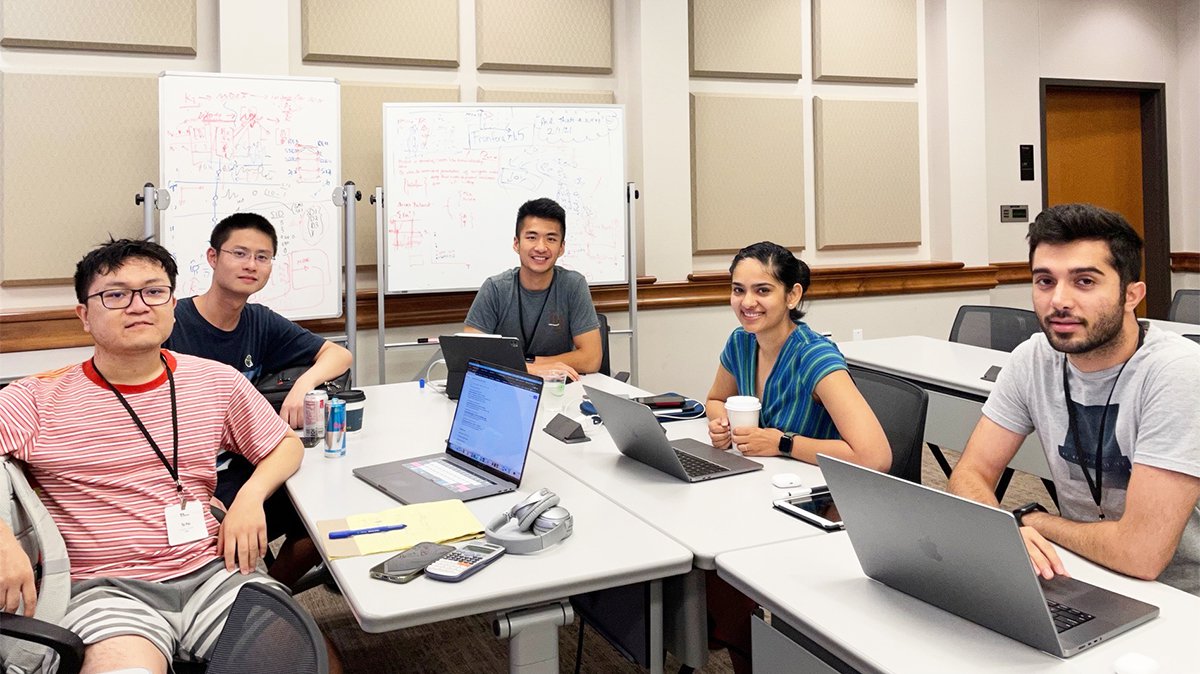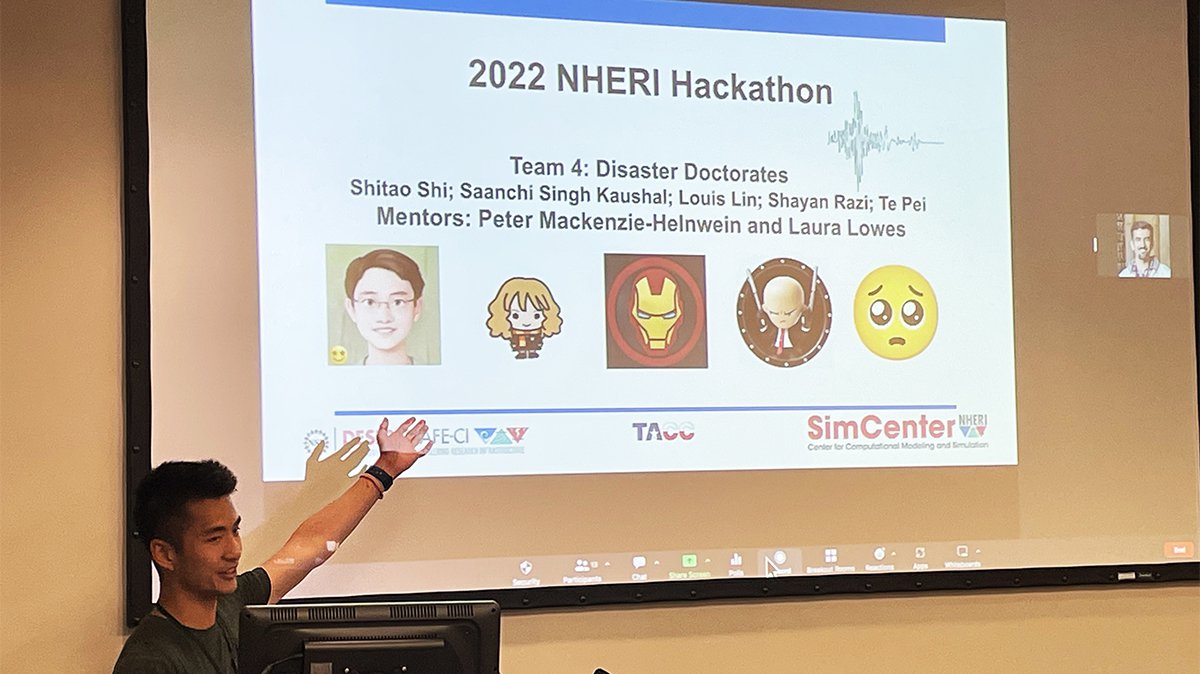The NHERI Hackathon was held on July 27-29, 2022 at the Texas Advanced Computing Center at the University of Texas at Austin, following the DesignSafe Academy which occurred July 25-26. The Hackathon involved participants working in teams to solve specific natural hazards problems using NHERI data, DesignSafe computational resources, and SimCenter tools. The Hackathon provided an exciting opportunity to improve knowledge of NHERI resources and DesignSafe/SimCenter tools, discover new research workflows, explore exciting research areas, and network and connect with inter- and intra-disciplinary colleagues. One of the projects was accessible for remote participation.
Krishna Kumar, one of the Hackathon organizers, noted that 24 participants were all PhD or MS students working in natural hazards, but had not used DesignSafe, so they received some basic training from the DesignSafe Academy before participating in the Hackathon. At the Hackathon they were able to use the DesignSafe and SimCenter tools to solve various natural hazard problems. The participants formed six teams and were mentored by DesignSafe and SimCenter personnel to tackle different projects during the Hackathon.
The hackathon teams were judged on four criteria: innovation, creativity, presentation, and use of DesignSafe and SimCenter tools. The winning team effectively used SimCenter tools coupled with Machine Learning algorithms running on DesignSafe jupyter to develop surrogate models for natural hazard analysis. The winning team's project, "Identifying best low-d.o.f. surrogate models for complex structures by combining FEM and ML," can be accessed from DesignSafe at https://www.designsafe-ci.org/data/browser/public/designsafe.storage.published/PRJ-3599.

Members of Team Disaster Doctorates: Te Pei, Shitao Shi, Louis Lin, Saanchi Singh Kaushal, and Shayan Razi

Louis Lin introduces the work of Team Disaster Doctorates
TEAM:
MENTORS:
SUMMARY: The use of high-fidelity structural models for the assessment of the effects of an earthquake on a region are too computationally demanding, especially if uncertainties in design, construction, etc. are considered. Thus, surrogate models that have many fewer degrees-of-freedom (d.o.f), greatly reduced computational demands, and provide accurate simulation of essential behavior, are required. These surrogate models compute significantly faster, allowing us to analyze many more individual buildings for each region. This project built and utilized an integrated Finite Element (FE) and machine learning (ML) approach for the identification of best types of and parameters for low-d.o.f. models.